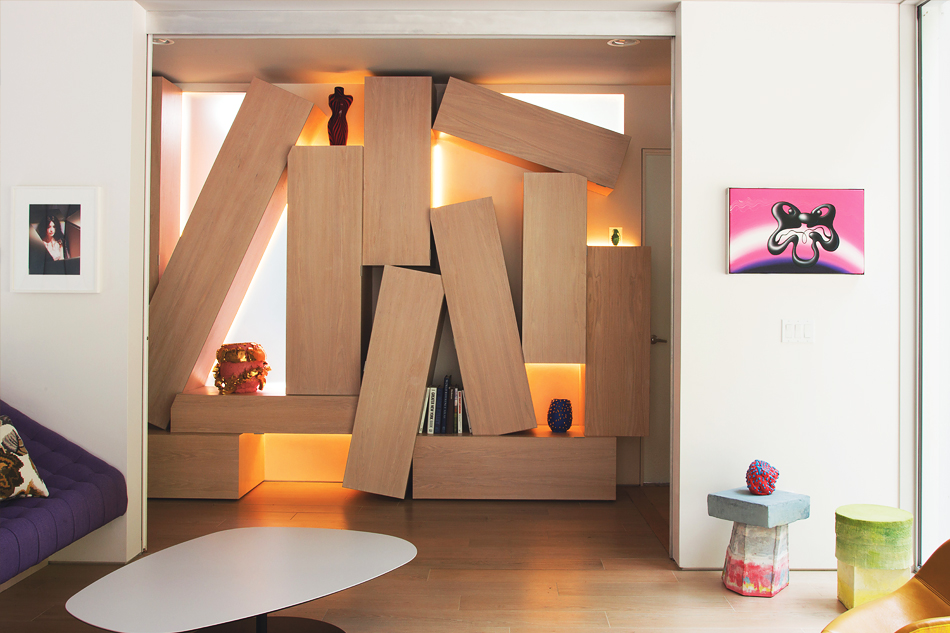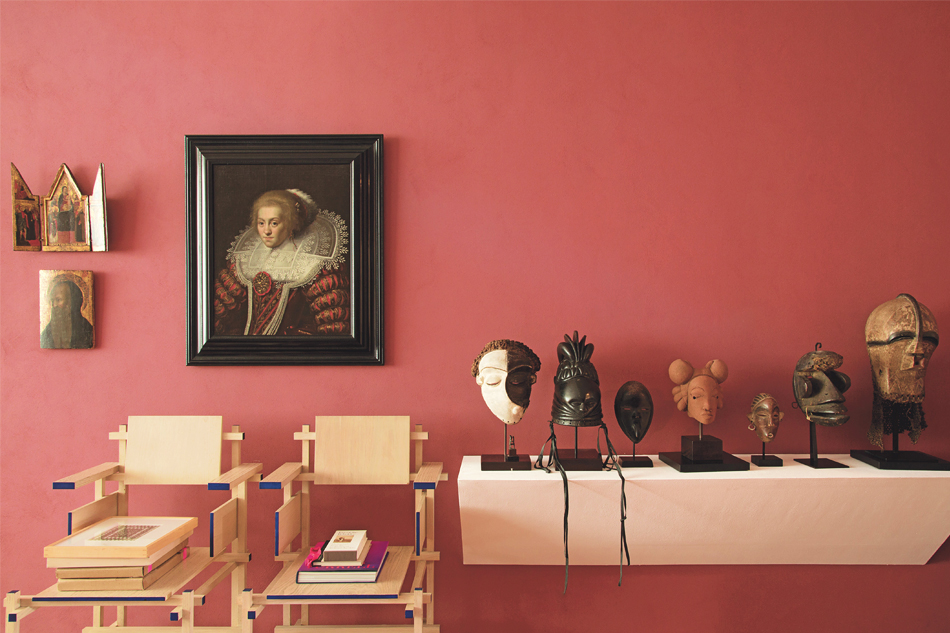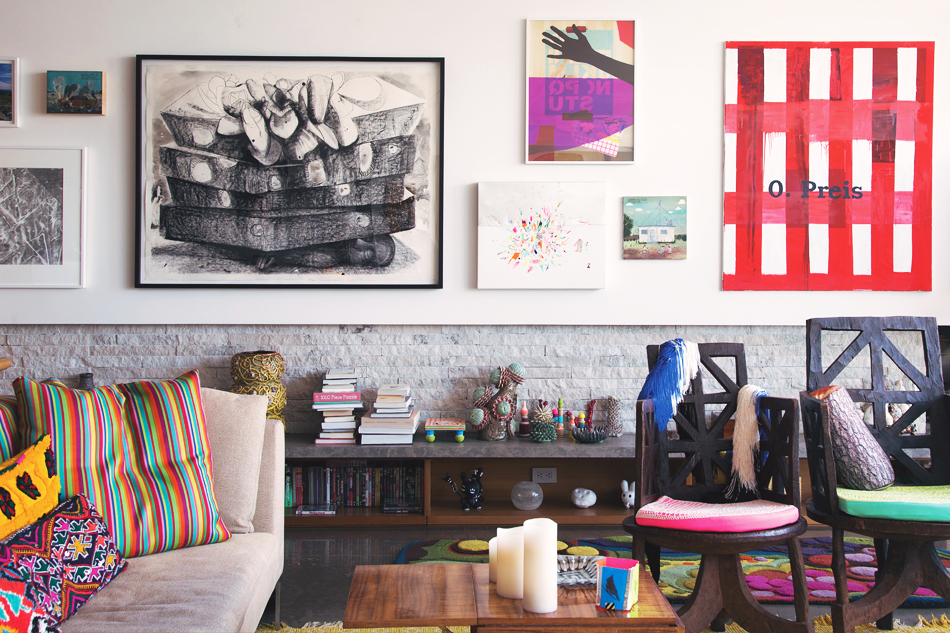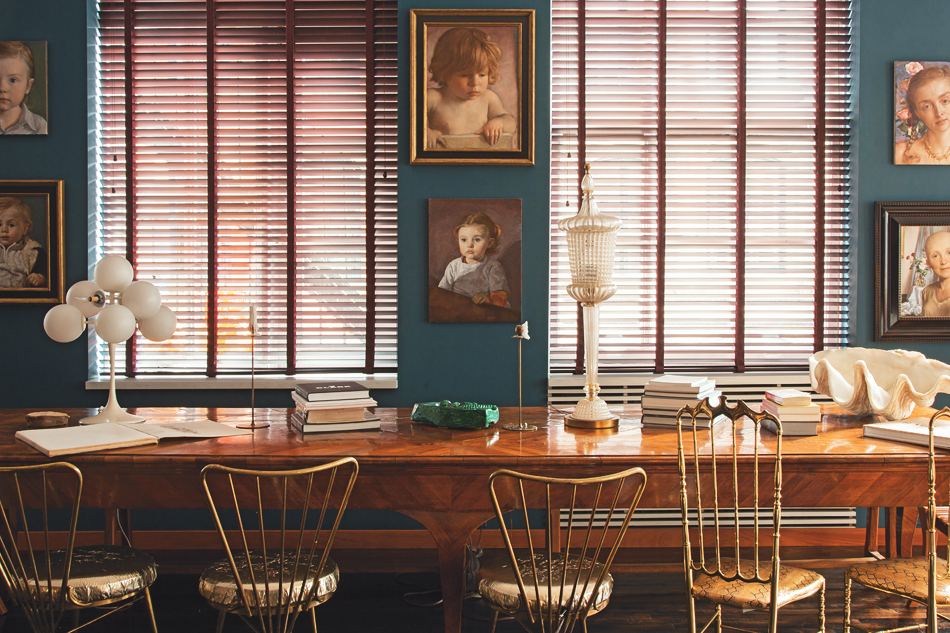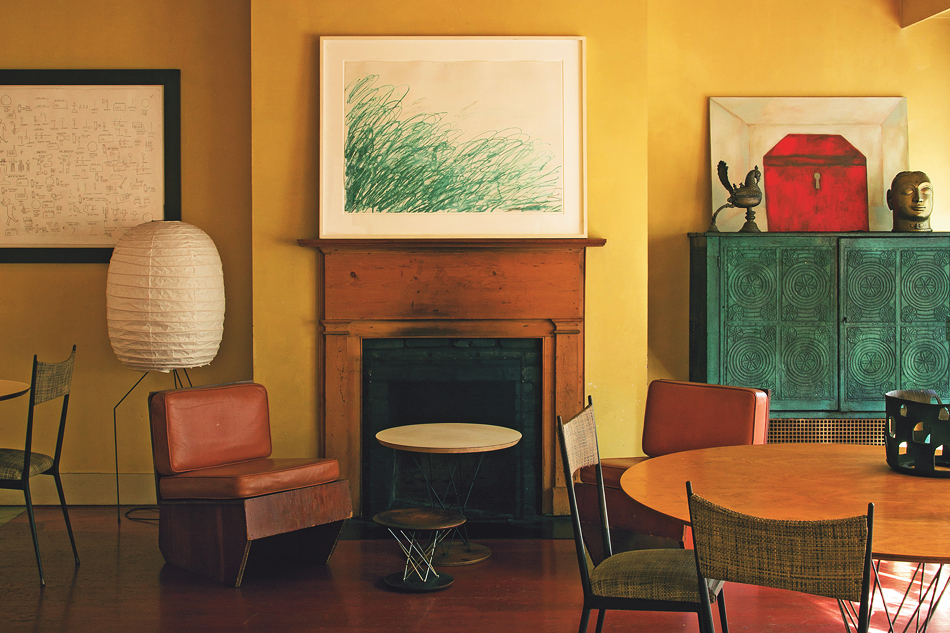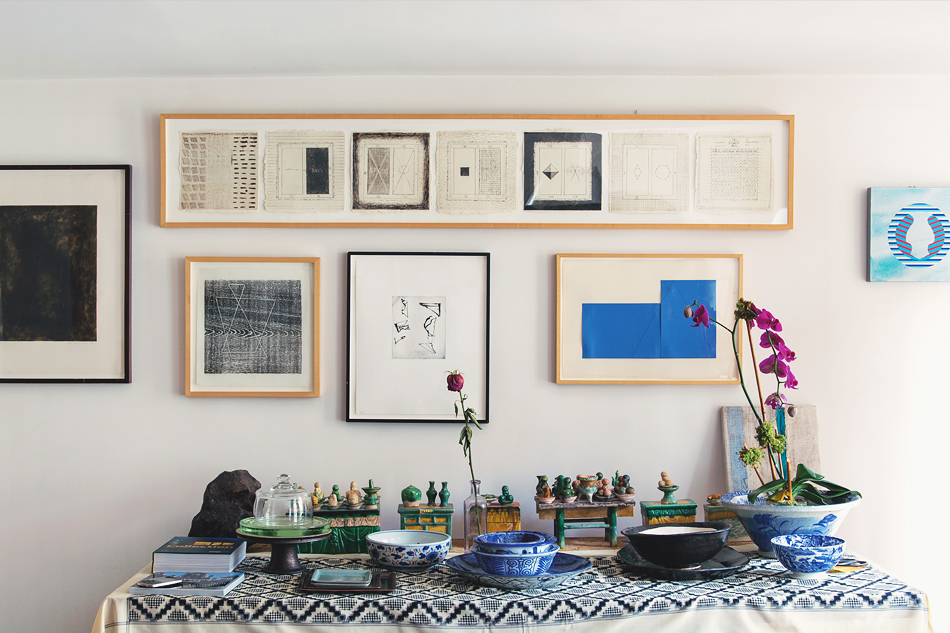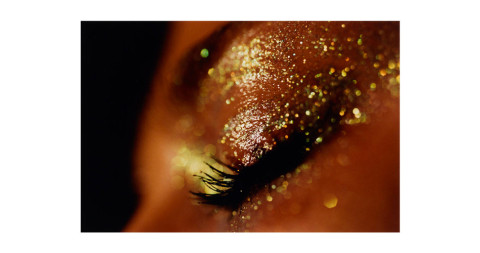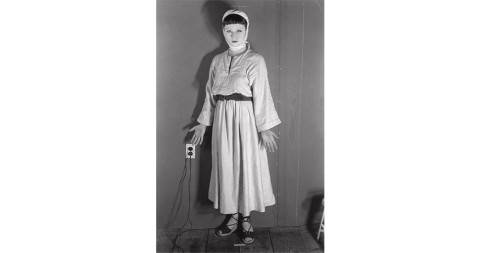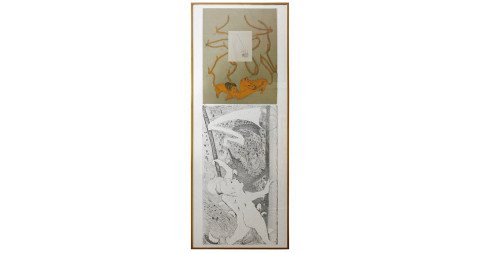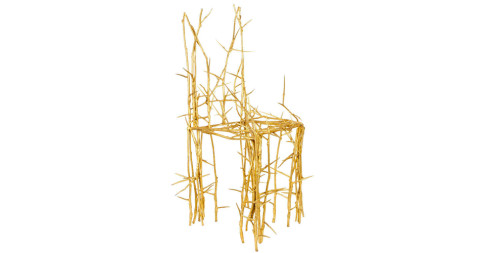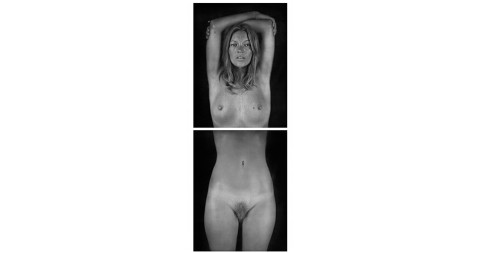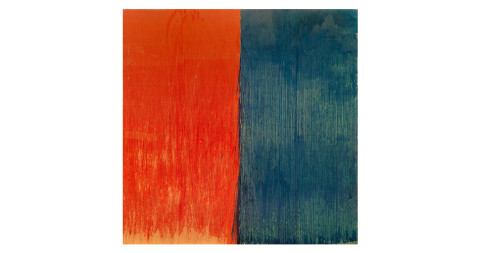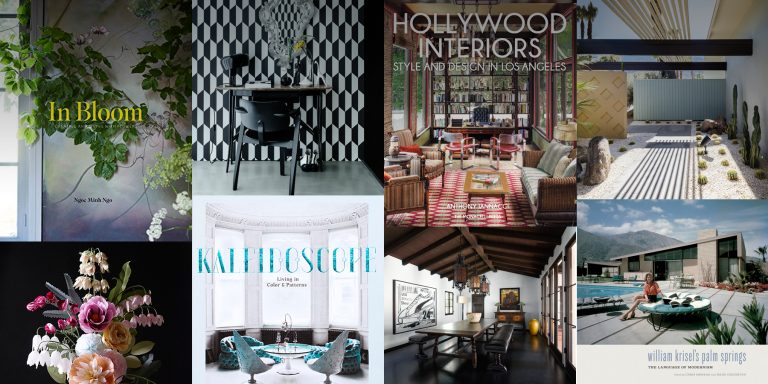
January 4, 2016Collaborators on Artists Living with Art, Oberto Gili and Amanda Benchley, together at their book party at the New Museum in New York (photo by Nelson Hancock). Top: A painting by Will Cotton of his partner, Rose Dergan, shares a wall of his TriBeCa loft with works by Andy Warhol and Ryan McGinness. All photos © 2015 Oberto Gili, courtesy of Abrams
Oberto Gili was at once the obvious and a not-so-obvious choice to shoot Artists Living with Art (Abrams) — a new book that I coauthored with Stacey Goergen — which takes an intimate look inside the homes of some of today’s most prominent contemporary artists. We knew we needed someone who could be comfortable with, and make comfortable, a star-studded list of artists that included Chuck Close, Glenn Ligon and Cindy Sherman, as well as high-power couples like John Currin and Rachel Feinstein and Helen and Brice Marden.
A leading fashion and interiors photographer for more than 30 years, snapping the elegant residences of style setters around the world for magazines like Architectural Digest, Elle Decor and House & Garden, Gili was definitely on our radar.
And yet Artists Living with Art was not going to be a typical coffee-table book. We wanted to pull back the curtain on these artists’ homes to examine their personal collections — the “art,” in the literal sense of the Warhols and de Koonings on the walls, as well as the smaller, treasured objects, such as artisanal ceramics, textiles and a surprising number of Chinese scholar’s rocks. We needed a photographer with the ability to highlight each relevant work of art or other collectible while also conveying a feel for the interiors and thus the artists themselves.
We knew that Gili was our lensman the instant he swung open the front door of his charmingly shabby West Village brownstone apartment brimming with a mix of antique Italian furniture, vintage suzanis, folk art and piles of art books. Not only has he authored his own books, including Home Sweet Home (co-authored with Susanna Salk and published by Rizzoli in 2011) and the upcoming Private Renaissance (to be published by Rizzoli in late 2016), but we saw that his innate artistic style — and eye-catching collections — would be in perfect harmony with the tenor of the book.
We were right: W magazine has called the book “tantalizingly voyeuristic,” thanks in no small part to Gili’s unerring ability to capture the spirit of each of the 25 homes that were nearly as diverse as the list of artists represented. I recently sat down with him at his wonderfully colorful bazaar of an apartment (he shuttles between New York City and his farmhouse in northern Italy) to reflect on our collaboration.

When it comes to collecting, Glenn Ligon says he wants to live with “artists that have some importance to my work.” To wit, his living room features pieces by Ellsworth Kelly, represented by the 1964 print Red/Blue, just left of center; Chris Ofili, whose 2009 The Healer, is at the far left, and Christopher Wool, whose 2000 silk screen My House III hangs at far right.
Why were you interested in doing this project?
Because I thought it was a very good idea, a very interesting idea to see how these major artists lived, what kind of furnishings they have in their house, so I was really enthusiastic.
What were your expectations? Did you think you were just going to see a string of airy, all-white artists lofts in SoHo filled with abstract paintings?
I had no expectation. I’ve been doing this work for 25 years, and I have learned that you should never expect anything, because everybody has his own fantasy. Sometimes you think, “Okay, I am going to see a fantastic place,” and then you get there, and it’s nothing. And sometimes you think,“It’s going to be boring,” and it’s completely the opposite. So I had no expectation. I mean, I had expectations that being artists, for sure, something interesting would be in the house, but that’s all.
Did you find it challenging that we wanted you to focus on the art rather than capture the entire room, as you would for one of the more mainstream design magazines?
Well, sometimes it’s a problem. If you really want to photograph a piece of art, you shouldn’t do it in the house. You should have the perfect light, so you don’t have reflection. If you want to photograph art in a house, you need to have a piece of wall, so you understand that you are not in a studio.

At Helen and Brice Marden’s house in Tivoli, New York, several of Helen Marden’s paintings are on view. At left is 1997’s Holi Indian and through the doorway can be seen an untitled work from 2010 made with resin and spices.
You are known for your “lived-in” aesthetic — you like things to look very natural. Did the fact that the artists were very casual about the art they live with lend itself better to the way you like to shoot?
Absolutely — when I shoot, I just like to understand the place, and the only thing I add is my vision. But I am not modifying or moving anything.
The beautiful photographs are one of the first things people mention to us, and we found your process fascinating. There’s very little set up, no lights, props or styling. Is that the way you have always worked? What do you like about working this way?
I like the immediacy, and I like the naturalness. A long time ago I worked with artificial lights and strobe lights and HMI lights, movie lights, and now I try to work purely with daylight.

On view in Rashid Johnson’s kitchen is a diverse selection of works by Anthony Pearson, at left, William Pope. L, Djordje Ozbolt and Pipilotti Rist.
What would you say is the biggest difference between these artists’ homes, which were not professionally decorated, and some of the other stylish homes you’ve photographed?
I always say that style is not something you can buy. You can buy a kind of style, pay a lot of money to the good decorators, but if your soul is not in it, it doesn’t work. These artists’ homes — there’s no decoration involved. It is not a showcase of their art, either, especially where they live. They have great sensitivity, great sensibility, and so it looks beautiful.
Is there a difference between the way the artists show their art and the way it’s displayed in some of the great collectors’ homes you’ve seen?
Some collectors’ houses are really interesting, because usually a collector is an intelligent human being. But sometimes it’s not interesting in the least, not because of the work but because of the way it’s displayed — it’s put there like a showpiece.
Will Cotton’s place is truly, truly beautiful, and his bedroom is so simple, with just that little Gil Elvgern drawing. It is fantastic.
“I always say that style is not something you can buy. You can buy a kind of style, pay a lot of money to the good decorators, but if your soul is not in it, it doesn’t work.”

More than a decade ago, Will Cotton started a weekly drawing group with a number of artist friends, including Hilary Harkness. Participants often swap works and a few of those sketches hang on Cotton’s wall, including a 2005 watercolor by Harkness, bottom row second from right, along with two stacked drawings by Reginald Marsh, bottom right, and a 2012 Jasper Johns lithograph, bottom left.
What else about Will’s home did you like? Was it the colors? The design?
It’s the soul and the mood. When you photograph a house, you shouldn’t judge if the house is what you like or what you don’t like. Some of the places I’ve shot, I would make them my home; some of the places, I wouldn’t make them my home. But I just understand what the place is and try to get the soul out of it.
I think that’s why this book has been so well received. Did you have any favorite homes?
Of all the houses we photographed, my favorites are Will Cotton’s, Mary Heilmann’s farmhouse — so simple — and the Mardens’. Their house is fantastic: Besides the mix of Brice’s and Helen’s own art, there is some decoration, too.
Did you come home from any shoots and change the way you live with art?
No. But if I could afford it, I would buy a Will Cotton or a Brice Marden.

Ugo Rondinone lives in a 15,000-square-foot former Baptist church in Harlem that he restored and turned into a living space and studio for himself. He built the dining table, which is surrounded by chairs by Franz West.
Your home here is as artfully arranged as those of the artists in our book. How do you approach your own collecting?
I am not a collector. I travel a lot, and sometimes when you are on a fantastic trip or in a fantastic place, you buy something there, and that becomes like a snapshot of one day of your life. I don’t have that much art, but I buy what I like. I buy from people I like. And everything I have reminds me a little bit of a special part of my life.
I think that’s true of these artists too. They have work by their friends, work that they like. It’s very similar.
Yes, absolutely.
Can you share your secret for making your portrait subjects feel so comfortable? We watched these very famous artists melt in your presence.
I am just nice, I am very sincere and very honest. I am not pretentious. I don’t think it’s a secret. Maybe it’s a gift.
Or Support Your Local Bookstore
Shop the Artists from the Book

